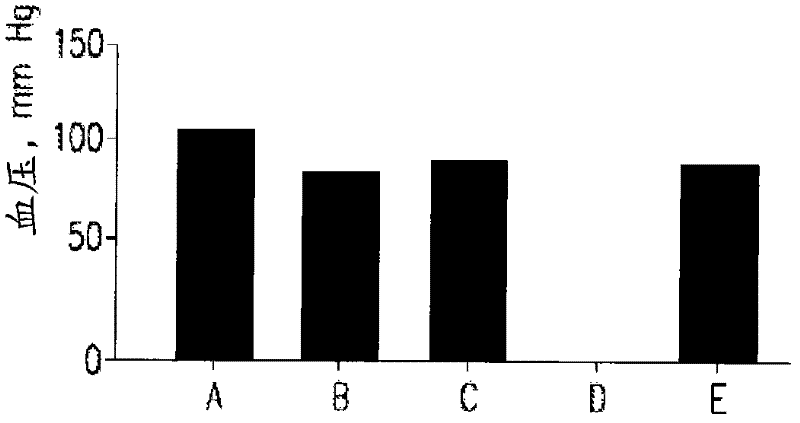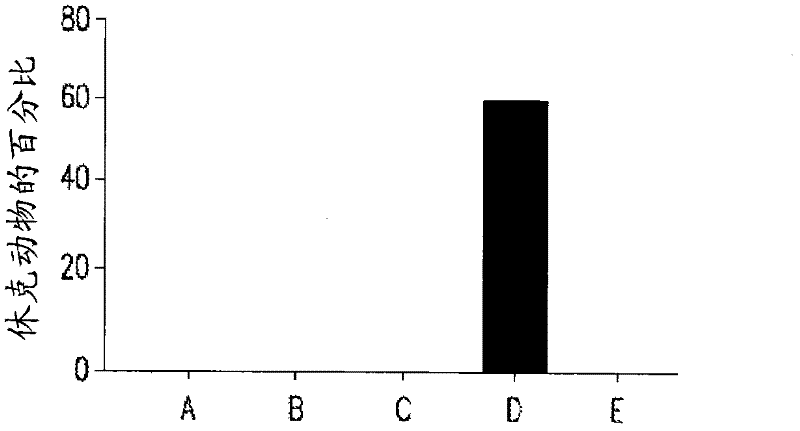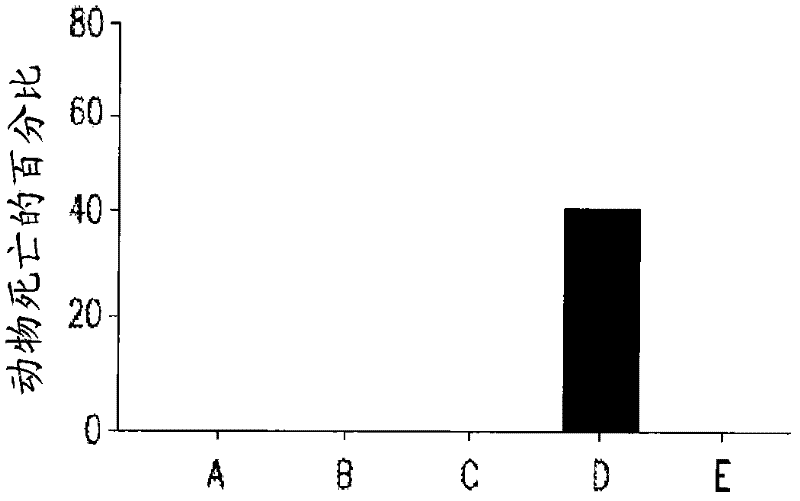Methods for treating vascular leak syndrome
A technique for vascular leak syndrome, applied in the treatment of vascular leak syndrome, treatment of vascular leak caused by the presence of pathogens, treatment of vascular leak caused by inflammatory disease, treatment of metastatic renal cell carcinoma and metastatic In the field of melanoma, it can solve the problems of limiting doses and stopping treatment
- Summary
- Abstract
- Description
- Claims
- Application Information
AI Technical Summary
Problems solved by technology
Method used
Image
Examples
Embodiment 1
[0430] 4-{(S)-2-[(S)-2-(tert-butoxycarbonylamino)-3-phenylpropionylamino]-2-(4-ethylthiazol-2-yl)ethyl} Phenylsulfamic acid (5)
[0431] Preparation of [1-(S)-carbamoyl-2-(4-nitrophenyl)ethyl-carbamic acid tert-butyl ester (1): 2-(S)-tert-butoxycarbonyl at 0°C To a solution of amino-3-(4-nitrophenyl)-propionic acid and N-methylmorpholine (1.1 mL, 9.65 mmol) in DMF (10 mL) was added dropwise isobutyl chloroformate (1.25 mL, 9.65 mmol). The mixture was stirred at 0 °C for 20 min, after which NH 3 (g) Pass the reaction mixture for 30 minutes. The reaction mixture was concentrated and the residue was dissolved in EtOAc with 5% citric acid, water, 5% NaHCO 3 , water and brine successively, dried (Na 2 SO 4 ), filtration and concentration in vacuo gave a residue which was triturated with an EtOAc / petroleum ether mixture to afford 2.2 g (74%) of the desired product as a white solid.
[0432] Preparation of [2-(4-nitrophenyl)-1-(S)-thiocarbamoylethyl]carbamate tert-butyl ester ...
Embodiment 2
[0472] 4-{(S)-2-(S)-2-(tert-butoxycarbonylamino)-3-phenylpropionylamino-2-(2-phenylthiazol-4-yl)}phenylsulfamate Acid (9)
[0473] Preparation of (S)-[3-diazo-1-(4-nitrobenzyl)-2-oxo-propyl]-carbamic acid tert-butyl ester (6): at 0°C, to 2-( S)-tert-butoxycarbonylamino-3-(4-nitrophenyl)-propionic acid (1.20 g, 4.0 mmol) in THF (20 mL) was added dropwise triethylamine (0.61 mL, 4.4 mmol) , followed by the addition of isobutyl chloroformate (0.57 mL, 4.4 mmol). The reaction mixture was stirred at 0 °C for 20 minutes and filtered. The filtrate was treated with diazomethane (-16 mmol) in ether at 0 °C. The reaction mixture was stirred at room temperature for 3 hours, then concentrated in vacuo. The resulting residue was dissolved in EtOAc and washed successively with water and brine, dried (Na 2 SO 4 ), filtered and concentrated. The residue was purified on silica (hexane / EtOAc 2:1) to afford 1.1 g (82% yield) of the desired product as a light yellow solid. 1 H NMR (300MHz...
Embodiment 3
[0492] 4-{(S)-2-[(S)-2-(methoxycarbonylamino)-3-phenylpropionylamino]-2-(2-ethylthiazol-4-yl)ethyl}benzene Aminosulfonic acid (13)
[0493] Preparation of (S)-1-[(S)-1-(2-ethylthiazol-4-yl)-2-(4-nitrophenyl)-ethyl]amino-1-oxo-3-phenyl Methyl propan-2-ylcarbamate (12): Propylthioamide (69 mg, 0.78 mmol) and (S)-tert-butyl 4-bromo-1-(4-nitrophenyl)-3 -Oxybutan-2-ylcarbamate (7) (0.300g, 0.77mmol) in CH 3 The mixture in CN (4 mL) was refluxed for 2 hours. The reaction mixture was cooled to room temperature and diethyl ether was added to precipitate the intermediate product 2-(nitrophenyl)-(S)-1-(4-ethylthiazol-2-yl)ethylamine, and the The precipitate was isolated as the hydrobromide salt by filtration. The hydrobromide salt was mixed with diisopropylethylamine (0.38 mL, 2.13 mmol), 1-hydroxybenzotriazole (107 mg, 0.71 mmol) and (S)-(2-methoxycarbonyl-amino) - 3-Phenylpropanoic acid (175 mg, 0.78 mmol) was dissolved together in DMF (8 mL). The mixture was stirred at 0 °C for...
PUM
 Login to View More
Login to View More Abstract
Description
Claims
Application Information
 Login to View More
Login to View More - R&D
- Intellectual Property
- Life Sciences
- Materials
- Tech Scout
- Unparalleled Data Quality
- Higher Quality Content
- 60% Fewer Hallucinations
Browse by: Latest US Patents, China's latest patents, Technical Efficacy Thesaurus, Application Domain, Technology Topic, Popular Technical Reports.
© 2025 PatSnap. All rights reserved.Legal|Privacy policy|Modern Slavery Act Transparency Statement|Sitemap|About US| Contact US: help@patsnap.com



